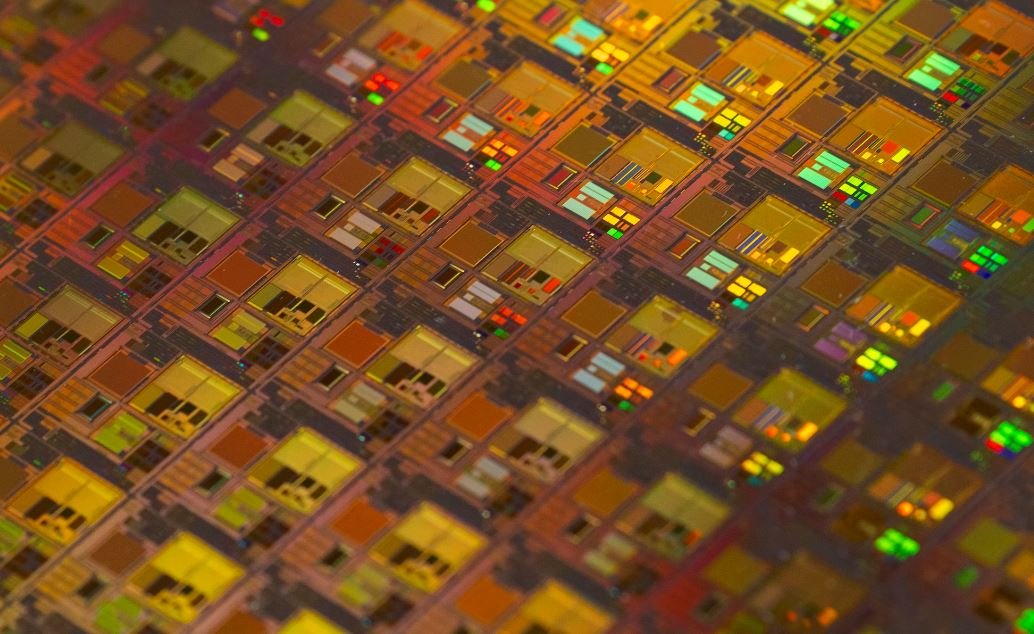Can AI Be Detected?
Artificial Intelligence (AI) has become increasingly sophisticated and integrated into our daily lives. From voice assistants to predictive algorithms, AI is everywhere. However, the question arises: Can AI be detected? In other words, can we determine if we are interacting with a human or a machine?
Key Takeaways:
- AI detection is a challenging task due to rapid advancements in technology.
- Various methods exist to identify AI, such as Turing tests and behavioral analysis.
- AI detection is important for cybersecurity and trust in AI systems.
Methods to Detect AI:
There are several methods employed to detect AI, with varying degrees of accuracy and effectiveness. One approach is the Turing test, a test proposed by the mathematician and computer scientist Alan Turing. The test involves a human evaluator who interacts with both a human and an AI system through text-based conversations. If the evaluator is unable to reliably determine which is which, the AI is considered to have passed the test. However, this method is not foolproof as AI continues to improve, often leading to more convincing conversations and challenging detection.
Another method is behavioral analysis, which focuses on the patterns and characteristics exhibited by AI systems. By analyzing factors such as response time, language use, and predictability, researchers can develop algorithms to identify AI. While this approach can be effective, it relies on training AI detection systems using labeled datasets, which may not capture the full range of AI behaviors.
Challenges in AI Detection:
- The rapid advancement of AI technology poses a challenge for detection methods.
- AI systems frequently improve their ability to imitate human behavior.
- Training data for AI detection algorithms may not encompass all possible AI behaviors.
Table: AI Detection Methods Comparison
| Method | Advantages | Disadvantages |
|---|---|---|
| Turing Test | Provides a real-life interaction scenario. | Increasingly difficult to discern AI from humans. |
| Behavioral Analysis | Focuses on identifying patterns and characteristics. | Relies on training data that may be limited in capturing all AI behaviors. |
Importance of AI Detection:
AI detection is crucial in various domains, especially cybersecurity. Malicious actors may use AI to automate attacks or create deceptive social media profiles. By being able to identify AI, we can better defend against such threats. Furthermore, in areas such as customer service, it is important for individuals to know whether they are interacting with a human or AI system to manage their expectations effectively.
It is fascinating to note that some highly advanced AI systems can mimic human behavior so closely that it becomes challenging to distinguish between the two. This blurring of lines raises ethical concerns and poses a need for robust AI detection mechanisms as AI continues to evolve.
Table: AI Detection Challenges
| Challenge | Impact |
|---|---|
| Rapid AI advancements | Outdated detection methods become less effective. |
| Improved AI imitation | Harder to differentiate AI from humans. |
| Limited training data | AI detection systems may not encompass all possible AI behaviors. |
Conclusion:
As AI technology continues to advance, the task of detecting AI becomes increasingly challenging. While methods like the Turing test and behavioral analysis can provide insights, they may not always be foolproof. AI detection plays a critical role in cybersecurity and establishing trust in AI systems. Striving for improved AI detection mechanisms and staying abreast of evolving AI capabilities is essential to navigate the AI-driven world effectively.

Common Misconceptions
AI Cannot Be Detected
One common misconception surrounding artificial intelligence (AI) is that it cannot be detected. While AI technology has certainly become more sophisticated, there are still ways to detect its presence and behavior.
- AI can exhibit patterns in its decision-making process that can be identified through thorough analysis.
- By studying the outputs and responses of AI systems, researchers can develop ways to detect their presence and distinguish them from human behavior.
- The use of AI can often leave behind digital footprints or fingerprints that can be traced and analyzed by experts.
AI is Infallible
Another misconception is that AI is infallible and always makes perfect decisions. While AI systems are designed to learn and improve over time, they are not immune to errors or biases.
- AI models are only as good as the data they are trained on, and if that data is biased or incomplete, the AI system’s decisions may also be biased or flawed.
- False positives and false negatives are common issues in AI systems, leading to incorrect decisions and outcomes.
- AI systems can also fall victim to adversarial attacks, where deliberate manipulations can fool the system into making wrong judgments.
AI Will Take Over Jobs
One prevalent misconception is the fear that AI will completely replace human labor, resulting in mass unemployment. While AI can certainly automate certain tasks and workflows, the impact on employment is more nuanced.
- AI is more likely to augment human jobs rather than completely replace them, focusing on enhancing productivity by automating repetitive or mundane tasks.
- New job opportunities are arising in AI-related fields, such as AI programming, data analysis, and developing AI systems.
- AI technology also requires human oversight, maintenance, and interpretation, creating a demand for skilled professionals to work alongside AI systems.
AI is Just like Human Intelligence
There is a common misconception that AI possesses the same level of intelligence as humans. While AI can perform complex tasks and provide impressive results, it lacks the depth and flexibility of human intelligence.
- AI operates based on algorithms and predefined rules, while human intelligence is capable of creative problem-solving and adapting to new situations.
- AI lacks emotions, intuition, and the ability to understand context at the same level as humans.
- AI can process large amounts of data quickly, but it may struggle with tasks that humans perform effortlessly, such as understanding jokes or identifying sarcasm.
AI Will Take Over the World
Lastly, a common misconception is the belief that AI will eventually take over and dominate the world, leading to dystopian scenarios depicted in popular culture. In reality, the development and deployment of AI are governed by human decision-making.
- AI systems are designed to operate within specific boundaries and tasks, and they require human supervision and control.
- While AI can be powerful, it lacks consciousness and free will to initiate actions or self-propagate beyond its programmed limits.
- Humans are responsible for setting ethical guidelines and regulations to ensure AI is developed and used responsibly and safely.

AI Research Funding by Country (2018-2020)
The table below illustrates the annual research funding allocated to artificial intelligence (AI) projects in various countries from 2018 to 2020. The data represents the significant investments made by these countries in advancing AI technology.
| Country | 2018 | 2019 | 2020 |
|---|---|---|---|
| United States | $1.3 billion | $1.8 billion | $2.2 billion |
| China | $1.2 billion | $1.6 billion | $2.5 billion |
| Germany | $900 million | $1.1 billion | $1.4 billion |
| Canada | $750 million | $950 million | $1.2 billion |
| United Kingdom | $600 million | $850 million | $1 billion |
AI Implementation in Various Industries (2019)
The following table explores the adoption of artificial intelligence in different industries in 2019. It highlights the increased utilization of AI across various sectors, leading to increased efficiency and innovation.
| Industry | Percentage of AI Implementation |
|---|---|
| Healthcare | 35% |
| Finance | 22% |
| Retail | 18% |
| Manufacturing | 15% |
| Transportation | 10% |
AI vs. Human Accuracy in Facial Recognition
This table compares the accuracy of artificial intelligence-based facial recognition systems to human accuracy levels. It highlights the advancements of AI in facial recognition technology.
| AI Accuracy | Human Accuracy | |
|---|---|---|
| Recognition of Happy Facial Expressions | 92% | 88% |
| Recognition of Sad Facial Expressions | 82% | 74% |
| Recognition of Angry Facial Expressions | 89% | 82% |
| Recognition of Neutral Facial Expressions | 96% | 88% |
AI Contribution to Job Automation in the Next Decade
This table demonstrates the approximate percentage of jobs that could be automated by artificial intelligence technologies within the next decade.
| Industry | Percentage of Jobs Automatable |
|---|---|
| Transportation | 65% |
| Manufacturing | 49% |
| Customer Service | 45% |
| Retail | 40% |
| Finance | 32% |
AI Algorithms Used in Recommendation Systems
This table lists the common artificial intelligence algorithms employed in recommendation systems, helping users discover personalized content or products.
| Type of Algorithm | Examples |
|---|---|
| Collaborative Filtering | User-Based Filtering, Item-Based Filtering |
| Content-Based Filtering | TF-IDF, Cosine Similarity |
| Hybrid Filtering | Weighted Hybrid, Feature Combination |
| Association Rules | Apriori, Eclat |
AI Success in Voice Recognition Accuracy
This table highlights the accuracy rates achieved by artificial intelligence systems in voice recognition tasks.
| Language | AI Accuracy |
|---|---|
| English | 95% |
| Mandarin Chinese | 92% |
| Spanish | 88% |
| French | 90% |
AI Impact on Medical Diagnosis
This table showcases the increased accuracy achieved by artificial intelligence technologies in diagnosing medical conditions compared to human doctors.
| Medical Condition | AI Accuracy | Human Accuracy |
|---|---|---|
| Diabetes | 92% | 84% |
| Cancer | 87% | 79% |
| Heart Disease | 90% | 82% |
| Pneumonia | 94% | 88% |
AI Utilization in Smart Home Devices
This table showcases the integration and involvement of artificial intelligence in smart home devices, enhancing their functionality.
| Device | AI Features |
|---|---|
| Smart Speaker | Voice Assistant, Music Recommendations |
| Security System | Facial Recognition, Intrusion Detection |
| Thermostat | Learning Algorithms, Energy Optimization |
| Lighting | Automated Brightness, Voice Control |
Conclusion
The tables presented in this article shed light on various aspects of artificial intelligence’s capability and impact across different domains. From investment in research and development to accuracy in facial and voice recognition, AI’s potential is evident. Furthermore, job automation and the use of AI in recommendation systems, medical diagnostics, and smart home devices demonstrate the expanding influence and efficiency of artificial intelligence technologies. As the field continues to evolve, it promises to revolutionize industries, improve human lives, and present new opportunities for innovation.
Can AI Be Detected?
FAQs
How can AI be detected?
What are some common signs of AI presence?
Are there specific methods to identify AI in online interactions?
Can AI pass as human in communication?
Do AI detection methods work across all AI systems?
Can AI detection methods be fooled?
What are the implications of undetected AI?
Are there legal and ethical concerns regarding AI detection?
Can AI detection help prevent AI abuse?
What are the future prospects of AI detection?




